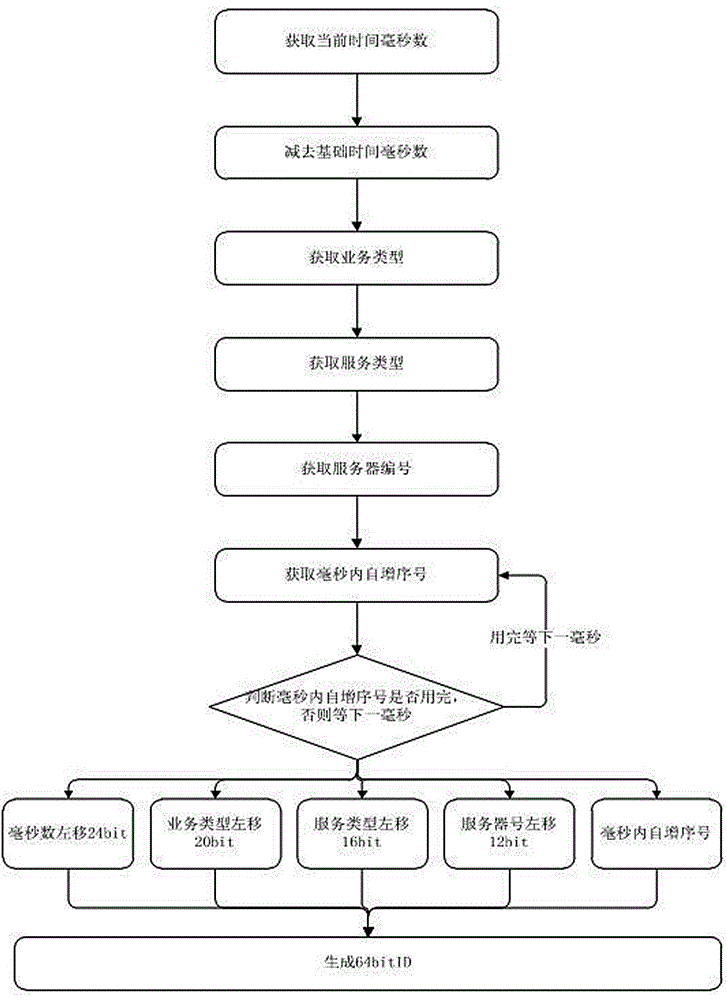Method for generating unique ID (identification) in distributed system
A distributed system, the only technology, applied in special data processing applications, instruments, electrical digital data processing, etc., can solve problems such as increasing the complexity of system integration, and achieve the effect of reducing the difficulty of system integration and high efficiency
- Summary
- Abstract
- Description
- Claims
- Application Information
AI Technical Summary
Problems solved by technology
Method used
Image
Examples
Embodiment
[0027] 1) Get the milliseconds of the current time: 762824999253053440;
[0028] 2) Suppose the number of milliseconds of the base time set in the system is 1288834974657, so subtract the number of milliseconds of the base time: 762824999253053440 - 1288834974657 = 762823710418078783;
[0029] 3) Assuming that the system business type, service type, and server are 2, 9, and 1 respectively, obtain the current business type, service type, and server number values;
[0030] 4) Obtain the self-increment number 5 within milliseconds;
[0031] 5) Calculate id:
[0032] Step a: Subtract 1288834974657 from the number of milliseconds 762824999253053440 to get 762823710418078783, and the value obtained by shifting 24 bits to the left is 2269171050489053184;
[0033] milliseconds decimal 762823710418078783 binary (64 bit) 0000101010010110000110000001111101111101101101110000110000111111 operate shift left 24 bits binary value (64 bit) 000111110111110...
PUM
 Login to View More
Login to View More Abstract
Description
Claims
Application Information
 Login to View More
Login to View More - R&D
- Intellectual Property
- Life Sciences
- Materials
- Tech Scout
- Unparalleled Data Quality
- Higher Quality Content
- 60% Fewer Hallucinations
Browse by: Latest US Patents, China's latest patents, Technical Efficacy Thesaurus, Application Domain, Technology Topic, Popular Technical Reports.
© 2025 PatSnap. All rights reserved.Legal|Privacy policy|Modern Slavery Act Transparency Statement|Sitemap|About US| Contact US: help@patsnap.com


